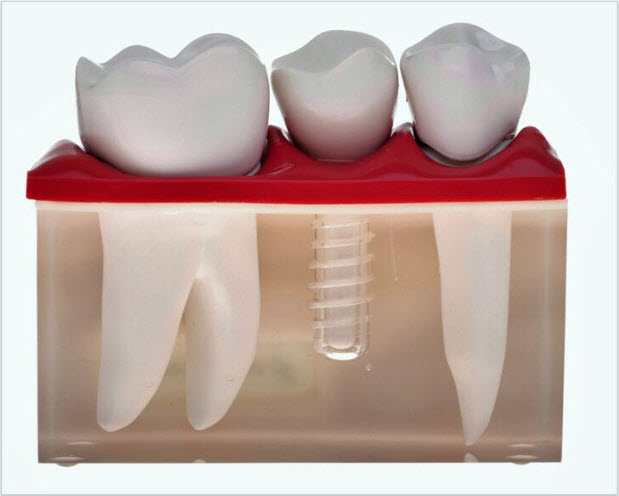Dental implants: what you need to know.

What happens when a tooth is broken or erodes away? The answer is dental implants, which have changed the game when it comes to dental care.
What is a dental implant?
The easiest way to think of an implant is that it essentially acts as an artificial tooth root. If you’ve lost a tooth or damaged a tooth so badly that it won’t survive, then a dentist or oral surgeon can remove the tooth and insert an implant, which fills roughly the same space as your tooth and its root were before.
But the implant doesn’t just sit there like bridges or dentures. The implant is actually connected or fused to the bone. One can compare it to a base or a foundation of a house, which acts in a similar way to the structure you’ll find underneath your house. You lay a foundation and then on top of that you’ll build a house, and that’s exactly what we do with your dental implant: once it’s integrated or fused with the bone then you’ve got a great base to put a crown on top of it.
How strong are they?
The human jaw is capable of considerable force when it comes to biting. So it stands to reason that it’d be remiss of us to use dental implants that aren’t capable of withstanding everything that our mouths throw at them.
The strongest chewing forces take place in the posterior part of the mouth, which is where we crush our food. The bond between the implant and the bone must, of course, be greater than those biting forces, otherwise we’ll lose the bond and you’ll lose your implant. They need to be incredibly stable.
Similarly, the implants we use are made of materials that can withstand a significant amount of biting force. The last thing we want is a broken implant, or a situation in which the implant is still attached to the bone, but is split in some way and rendered unusable. With modern implants, patients can bite into just about any food with confidence, knowing their implant isn’t going anywhere.
Horses for courses.
While the same type of dental implant is used throughout the mouth, the size and diameter may vary depending on the space available. A larger space means a larger diameter, but that’s not the only factor. Even more important is determining how much bone is available to make the attachment, which affects the length of the implant we are able to use.
In most cases, the amount of bone available is shaped by looking at where the nerve runs through the jaw, particularly in the lower jaw. In the upper jaw, we also need to factor in the position of the sinus. In some situations, patients may require a sinus grafting procedure to ensure we’re able to attach their dental implant safely and successfully.
